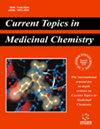鱼腥草的营养价值、治疗作用、植物化学和毒理学:综述
IF 2.9
4区 医学
Q3 CHEMISTRY, MEDICINAL
Current topics in medicinal chemistry
Pub Date : 2024-04-19
DOI:10.2174/0115680266300963240408051156
引用次数: 0
摘要
鱼腥草具有多方面的益处,它不仅是一种前景广阔的农产品,还是一种用途广泛的资源,对健康、生物多样性和经济增长都有影响。鱼腥草在治疗发烧和腹泻等各种疾病方面有着丰富的传统用途。除了传统用途外,该植物的抗氧化特性还表明其在抗氧化压力相关疾病方面具有潜在的应用价值。它的抗高血糖特性表明其有望用于控制血糖水平的升高,而它的抗菌和抗病毒特性则暗示了其在传染病控制方面的潜在应用。此外,这种植物的抗癌特性使其成为医学研究领域的宝贵资源。该植物在解决一系列健康问题方面也表现出相当大的潜力,包括非传染性疾病和感染、止泻和抗病毒特性。从本质上讲,叶下珠不仅仅是一种农业资产。它将丰富的营养、健康益处和经济可行性独特地结合在一起,凸显了其成为当地和全球舞台上宝贵资产的潜力。在这篇综述中,我们将讨论鱼腥草的民族药理学、营养价值、治疗作用、植物化学和毒理学。本文章由计算机程序翻译,如有差异,请以英文原文为准。
Nutritional Value, Therapeutic Effects, Phytochemistry, and Toxicology of Lepisanthes fruticosa: A Review
The multifaceted benefits of Lepisanthes fruticosa position it is not only as a promising agricultural commodity but also as a versatile resource with implications for health, biodiversity, and economic growth. Lepisanthes fruticosa has a rich history of traditional use for treating various ailments such as fever and diarrhea. Beyond its traditional uses, the plant's antioxidant properties suggest potential applications in combating oxidative stress-related conditions. Its antihyperglycemic properties indicate promise in managing elevated blood sugar levels, while its antibacterial and antiviral attributes hint at potential applications in infectious disease control. Furthermore, the plant's anticancer properties add to its appeal as a valuable resource in the realm of medical research. The plant also exhibits considerable potential in addressing a range of health concerns, including non-communicable diseases and infections, antidiarrheal, and antiviral properties. In essence, Lepisanthes fruticose emerges as more than just an agricultural asset. Its unique combination of nutritional richness, health benefits, and economic viability underscores its potential to become a valuable asset both locally and on the global stage. In this current review, we are discussed about the ethnopharmacology, nutritional value, therapeutic effects, phytochemistry, and toxicology of Lepisanthes fruticose.
求助全文
通过发布文献求助,成功后即可免费获取论文全文。
去求助
来源期刊
CiteScore
6.40
自引率
2.90%
发文量
186
审稿时长
3-8 weeks
期刊介绍:
Current Topics in Medicinal Chemistry is a forum for the review of areas of keen and topical interest to medicinal chemists and others in the allied disciplines. Each issue is solely devoted to a specific topic, containing six to nine reviews, which provide the reader a comprehensive survey of that area. A Guest Editor who is an expert in the topic under review, will assemble each issue. The scope of Current Topics in Medicinal Chemistry will cover all areas of medicinal chemistry, including current developments in rational drug design, synthetic chemistry, bioorganic chemistry, high-throughput screening, combinatorial chemistry, compound diversity measurements, drug absorption, drug distribution, metabolism, new and emerging drug targets, natural products, pharmacogenomics, and structure-activity relationships. Medicinal chemistry is a rapidly maturing discipline. The study of how structure and function are related is absolutely essential to understanding the molecular basis of life. Current Topics in Medicinal Chemistry aims to contribute to the growth of scientific knowledge and insight, and facilitate the discovery and development of new therapeutic agents to treat debilitating human disorders. The journal is essential for every medicinal chemist who wishes to be kept informed and up-to-date with the latest and most important advances.

 求助内容:
求助内容: 应助结果提醒方式:
应助结果提醒方式:


